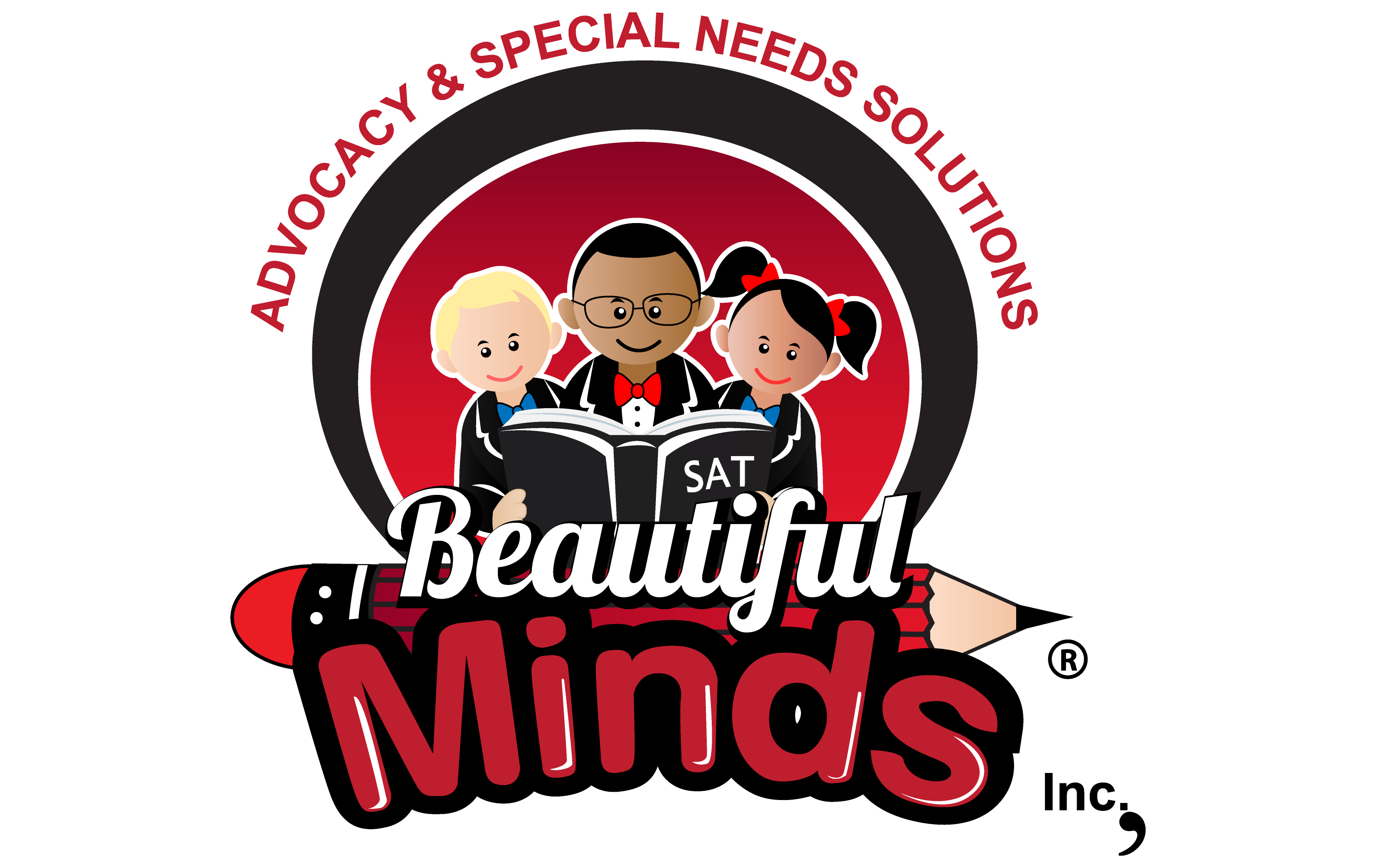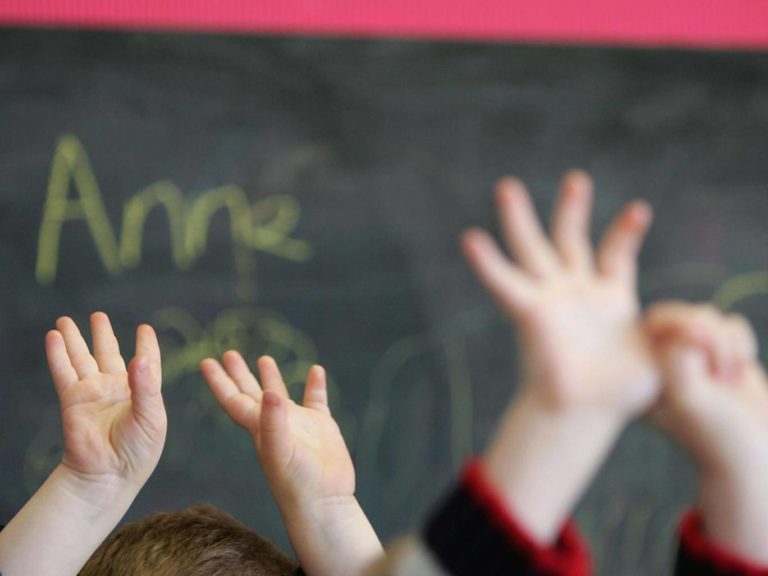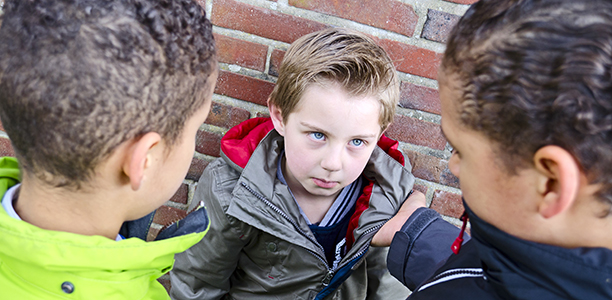By: Ifeanyi-Allah Ufondu, Marie Tejero Hughes, Sally Watson Moody, and Batya Elbaum
After discussion of each grouping format, implications for practice are highlighted with particular emphasis on instructional practices that promote effective grouping to meet the needs of all students during reading in general education classrooms. In the last 5 years, two issues in education have assumed considerable importance: reading instruction and inclusion. With respect to reading instruction, the issue has been twofold: (a) Too many students are not making adequate progress in reading), and (b) we are not taking advantage of research based practices in the implementation of reading programs. In the popular press the complexities and subtleties of this issue have been reduced to a simple argument between phonics versus whole language, but the reality is that there is considerable concern about the quality and effectiveness of early reading instruction. With respect to the second major issue of inclusion, considerable effort has been expended to restructure special and general education so that the needs of students with disabilities are better met within integrated settings. The result is that more students with disabilities receive education within general education settings than ever before, and increased collaboration is taking place between general and special education.
Both of these issues-reading instruction and inclusion-have been the topics for national agendas (e.g., President Clinton’s announcement in his State of the Union Address in 1996 that every child read by the end of third grade, Regular Education Initiative), state initiatives (e.g., Texas and California Reading Initiatives), and local school districts. The implementation of practices related to both of these issues has immediate and substantive impact on professional development, teaching practices, and materials used by classroom teachers.
Grouping practices for reading instruction play a critical role in facilitating effective implementation of both reading instruction and inclusion of students with disabilities in general education classes. Maheady referred to grouping as one of the alterable instructional factors that “can powerfully influence positively or negatively the levels of individual student engagement and hence academic progress”, as well as a means by which we can address diversity in classrooms. As increased numbers of students with learning disabilities (LD) are receiving education in the general education classroom, teachers will need to consider grouping practices that are effective for meeting these students’ needs. Furthermore, reading instruction is the academic area of greatest need for students with LD; thus, grouping practices that enhance the reading acquisition skills of students with LD need to be identified and implemented.
Until relatively recently, most teachers used homogeneous (same ability) groups for reading instruction. This prevailing practice was criticized based on several factors; ability grouping: (a) lowers self-esteem and reduces motivation among poor readers, (b) restricts friendship choices, and (c) widens the gap between poor readers and good readers. Perhaps the most alarming aspect of ability grouping was the finding that students who were the poorest readers received reading instruction that was inferior to that of higher ability counterparts in terms of instructional time; time reading, discussing, and comprehending text (Allington, 1980); and appropriateness of reading materials. As a result, heterogeneous grouping practices now prevail, and alternative grouping practices such as cooperative learning and peer tutoring have been developed.
As general education classrooms become more heterogeneous, due in part to the integration of students with LD, both special and general education teachers need to have at their disposal a variety of instructional techniques designed to meet the individual needs of their students. In this article, we provide an overview of the recent research on grouping. practices (whole class, small group, pairs, one-on-one) teachers use during reading instruction; furthermore, implications for reading instruction are highlighted after each discussion.
Whole-class instruction
Research findings
Considerable research has focused on the fact that for much of general education the instructional format is one in which the teacher delivers education to the class as a whole. The practice of whole-class instruction as the dominant approach to instruction has been well documented. For example, in a study that involved 60 elementary, middle, and high school general education classrooms that were observed over an entire year, whole-class instruction was the norm. When teachers were not providing whole-class instruction, they typically circulated around the room monitoring progress and behavior or attended to their own paperwork.
Elementary students have also reported that whole-class instruction is the predominant instructional grouping format. Students noted that teachers most frequently provided reading instruction to the class as a whole or by having students work alone. Students less frequently reported opportunities to work in small groups, and they rarely worked in pairs. Although students preferred to receive reading instruction in mixed-ability groups, they considered same ability grouping for reading important for nonreaders. Students who were identified as better readers revealed that they were sensitive to the needs of lower readers and did not express concerns about the unfairness of having to help them in mixed-ability groups. In particular, students with LD expressed appreciation for mixed-ability groups because they could then readily obtain help in identifying words or understanding what they were reading.
Many professionals have argued that teachers must decentralize some of their instruction if they are going to appropriately meet the needs of the increasing number of students with reading difficulties. However, general education teachers perceive that it is a lot more feasible to provide large-group instruction than small-group instruction for students with LD in the general education classroom. The issue is also true for individualizing instruction or finding time to provide mini lessons for students with LD. Teachers have reported that these are difficult tasks to embed in their instructional routines.
Implications for practice
Numerous routines and instructional practices can contribute to teachers’ effective use of whole-class instruction and implementation of alternative grouping practices.
Teachers can involve all students during whole-class instruction by asking questions and then asking students to partner to discuss the answer. Ask one student from the pair to provide the answer. This keeps all students engaged.
Teachers can use informal member checks to determine whether students agree, disagree, or have a question about a point made. This allows each student to quickly register a vote and requires students to attend to the question asked. Member checks can be used frequently and quickly to maintain engagement and learning for all students.
Teachers can ask students to provide summaries of the main points of a presentation through a discussion or after directions are provided. All students benefit when the material is reviewed, and a student summary allows the teacher to determine whether students understand the critical features.
Because many students with LD are reluctant to ask questions in large groups, teachers can provide cues to encourage and support students in taking risks. For example, teachers can encourage students to ask a “who,” “what,” or “where” question.
At the conclusion of a reading lesson, the teacher can distribute lesson reminder sheets, which all the students complete. These can be used by teachers to determine (a) what students have learned from the lesson, (b) what students liked about what they learned, and (c) what else students know about the topic.
Small-group instruction
Research findings
Small-group instruction offers an environment for teachers to provide students extensive opportunities to express what they know and receive feedback from other students and the teacher. Instructional conversations are easier to conduct and support with a small group of students. In a recent meta-analysis of the extent to which variation in effect sizes for reading outcomes for students with disabilities was associated with grouping format for reading instruction, small groups were found to yield the highest effect sizes. It is important to add that the overall number of small-group studies available in the sample was two. However, this finding is bolstered by the results of a meta-analysis of small-group instruction for students without disabilities, which yielded significantly high effect sizes for small-group instruction. The findings from this meta-analysis reveal that students in small groups in the classroom learned significantly more than students who were not instructed in small groups.
In a summary of the literature across academic areas for students with mild to severe disabilities, Polloway, Cronin, and Patton indicated that the research supported the efficacy of small-group instruction. In fact, their synthesis revealed that one-to-one instruction was not superior to small-group instruction. They further identified several benefits of small-group instruction, which include more efficient use of teacher and student time, lower cost, increased instructional time, increased peer interaction, and opportunities for students to improve generalization of skills.
In a descriptive study of the teacher-student ratios in special education classrooms (e.g., 1-1 instruction, 1-3 instruction, and 1-6 instruction), smaller teacher-led groups were associated with qualitatively and quantitatively better instruction. Missing from this study was an examination of student academic performance; thus, the effectiveness of various group sizes in terms of student achievement could not be determined.
A question that requires further attention regarding the effectiveness of small groups is the size of the group needed based on the instructional needs of the student. For example, are reading group sizes of six as effective as groups of three? At what point is the group size so large that the effects are similar to those of whole-class instruction? Do students who are beginning readers or those who have struggled extensively learning to read require much smaller groups, perhaps even one-on-one instruction, to ensure progress?
Although small group instruction is likely a very powerful tool to enhance the reading success of many children with LD, it is unlikely to be sufficient for many students. In addition to the size of the group, issues about the role of the teacher in small-group instruction require further investigation. In our analysis of the effectiveness of grouping practices for reading, each of the two studies represented different roles for the teacher. In one study, the teacher served primarily as the facilitator, while in a second study the teacher’s role was primarily one of providing direct instruction. Although the effect sizes for both studies were quite high (1.61 and .75, respectively), further research is needed to better understand issues related to a teacher’s role and responsibility within the group.
Implications for practice
Many teachers reveal that they have received little or no professional development in how to develop and implement successful instructional groups. Effective use of instructional groups may be enhanced through some of the following practices.
Perhaps the most obvious, but not always the most feasible application of instructional groups, is to implement reading groups that are led by the teacher. Whereas these groups have been demonstrated as effective, many teachers find it difficult to provide effective instruction to other members of the class while they are providing small-group instruction. Some teachers address this problem by providing learning centers, project learning, and shared reading time during small group instruction.
Flexible grouping has also been suggested as a procedure for implementing small-group instruction that addresses the specific needs of students without restricting their engagement to the same group all the time. Flexible grouping is considered an effective practice for enhancing the knowledge and skills of students without the negative social consequences associated with more permanent reading groups. This way teachers can use a variety of grouping formats at different times, determined by such criteria as students’ skills, prior knowledge, or interest. Flexible groups may be particularly valuable for students with LD who require explicit, intensive instruction in reading as well as opportunities for collaborative group work with classmates who are more proficient readers. Flexible grouping may also satisfy students’ preferences for working with a range of classmates rather than with the same students all of the time.
Student-led small groups have become increasingly popular based on the effective implementation of reciprocal teaching. This procedure allows students to take turns assuming the role of the leader and guiding reading instruction through question direction and answer facilitation.
Peer pairing and tutoring
Research findings
Asking students to work with a peer is an effective procedure for enhancing student learning in reading and is practical to implement because teachers are not responsible for direct contact with students. For students with LD involved in reading activities, the overall effect size for peer pairing based on a meta-analysis was ES = .37. This finding was similar to one reported for students with LD (ES = .36; Mathes & Fuchs, 1994) and for general education students (mean ES = .40).
The Elbaum and colleagues report revealed that the magnitude of the effects for peer pairing differed considerably depending on the role of the student within the pair. For example, when students with disabilities were paired with same-age partners, they derived greater benefit (ES = .43) from being tutored rather than from engagement in reciprocal tutoring (ES = .15). This may be a result that for the most part the tutors were students without disabilities who demonstrated better reading skills and were able to provide more effective instruction. These findings differ, however, when the peer pairing is cross-age rather than same-age. Overall, cross-age peer pairing students with disabilities derived greater benefit when they served in the role of tutor.
Students with LD prefer to work in pairs (with another student) rather than in large groups or by themselves. In fact, many students with LD consider other students to be their favorite teacher. Considering the high motivation students express for working with peers and the moderately high effect sizes that result from peer pairing activities for reading, it is unfortunate that students report very low use of peer pairing as an instructional procedure.
Implications for practice
Because students appreciate and benefit from opportunities to work with peers in reading activities, the following instructional practices may enhance opportunities for teachers to construct effective peer pairing within their classrooms.
Classwide Peer Tutoring (CWPT) is an instructional practice developed at Juniper Gardens to “increase the proportion of instructional time that all students engage in academic behaviors and provide pacing, feedback, immediate error correction, high mastery levels, and content coverage”. CWPT requires 30 minutes of instructional time during which 10 minutes is planned for each student to serve as a tutor, 10 minutes to be tutored, and 5 to 10 minutes to add and post individual and team points. Tutees begin by reading a brief passage from their book to their tutor, who in turns provides immediate error correction as well as points for correctly reading the sentences. When CWPT is used for reading comprehension, the tutee responds to “who, what, when, where, and why” questions provided by the tutor concerning the reading passage. The tutor corrects responses and provides the tutee with feedback.
Peer-Assisted Learning Strategies (PALS) borrows the basic structure of the original CWPT but expands the procedures to engage students in strategic reading activities. Students are engaged in three strategic reading activities more typically addressed during teacher directed instruction: partner reading with retell, paragraph summary, and prediction relay. PALS provides students with intensive, systematic practice in reading aloud, reviewing and sequencing information read, summarizing, stating main ideas, and predicting.
Think-Pair-Share hare was described by McTighe and Lyman as a procedure for enhancing student engagement and learning by providing students with opportunities to work individually and then to share their thinking or work with a partner. First, students are asked to think individually about a topic for several minutes. Then they are asked to work with a partner to discuss their thinking or ideas and to form a joint response. Pairs of students then share their responses with the class as a whole.
One-on-one instruction
Research findings
Traditionally, one-on-one instruction in which the student receives explicit instruction by the teacher is considered the most effective practice for enhancing outcomes for students with LD. In fact, the clinical model where the teacher works directly with the student for a designated period of time has a long standing tradition in LD. Most professionals consider one-on-one instruction to be the preferred procedure for enhancing outcomes in reading . Many professionals perceive one-on-one instruction as essential for students who are falling to learn to read: “Instruction in small groups may be effective as a classroom strategy, but it is not sufficient as a preventive or remedial strategy to give students a chance to catch up with their age mates”.
In a review of five programs designed for one-on-one instruction, Wasik and Slavin revealed that all of the programs were highly effective, even though they represented a broad range of methodologies. Though one-on-one instructional procedures are viewed as highly effective, they are actually infrequently implemented with students with LD, and when implemented, it is often for only a few minutes.
In a recent review of research on one-on-one instruction in reading, no published studies were identified that compared one-on-one instruction with other grouping formats (e.g., pairs, small groups, whole class) for elementary students with LD. Thus, though one-on-one instruction is a highly prized instructional procedure for students with LD, very little is known about its effectiveness.
Implications for practice
The implications for practice of one-on-one instruction are in many ways the most difficult to define because although there is universal agreement on its value, very little is known about its effectiveness for students with LD relative to other grouping formats. Furthermore, the instructional implications for practitioners revolve mostly around assisting them in restructuring their classrooms and caseloads so that it is possible for them to implement one-on-one instruction. Over the past 8 years we have worked with numerous special educators who have consistently informed us that the following factors impede their ability to implement one-on-one instruction: (a) case loads that often require them to provide services for as many as 20 students for 2 hours per day, forcing group sizes that exceed what many teachers perceive as effective; (b) increased requirements to work collaboratively with classroom teachers, which reduces their time for providing instruction directly to students; and (c) ongoing and time-consuming paperwork that facilitates documentation of services but impedes implementation of services.
Considering the “reality factors” identified by teachers, it is difficult to imagine how they might provide the one-on-one instruction required by many students with LD in order to make adequate progress in reading. Certainly, it would require restructuring special education so that the number of students receiving services and the amount of time these services are provided by special education teachers is altered.
Research studies have repeatedly shown that reading instruction in many classrooms is not designed to provide students with sufficient engaged reading opportunities to promote reading growth. We have provided a summary of recent research on the effectiveness for students with LD of various grouping practices that can increase engaged reading opportunities, as well as implications of this research for classroom instruction. As classrooms become more diverse, teachers need to vary their grouping practices during reading instruction. There needs to be a balance across grouping practices, not a sweeping abandonment of smaller grouping practices in favor of whole-class instruction. Teachers can meet the needs of all students, including the students with LD, by careful use of a variety of grouping practices, including whole-class instruction, teacher- and peer-led small group instruction, pairing and peer tutoring, and one-on-one instruction.
About the authors
Ifeanyi-Allah Ufondu, PhD, is the Nation’s leading Special Needs advocate and Educational Psychologist. He is also the founder of Beautiful Minds Inc.- Advocacy & Special Needs Solutions. His current interests include best grouping practices for reading instruction and advocacy for At-Risk youth. Marie Tejero Hughes, PhD, is a research assistant professor in the School of Education at the University of Miami. Her research interests include parental involvement and instructional strategies for students with disabilities in inclusive settings. Sally Watson Moody is a senior research associate in the School of Education at the University of Miami. Her research interests include instructional grouping and effective reading instruction for students with learning disabilities. Batya Elbaum, PhD, is an assistant research professor in the School of Education at the University of Miami. Her primary research is on the academic progress and social development of students with learning disabilities.



